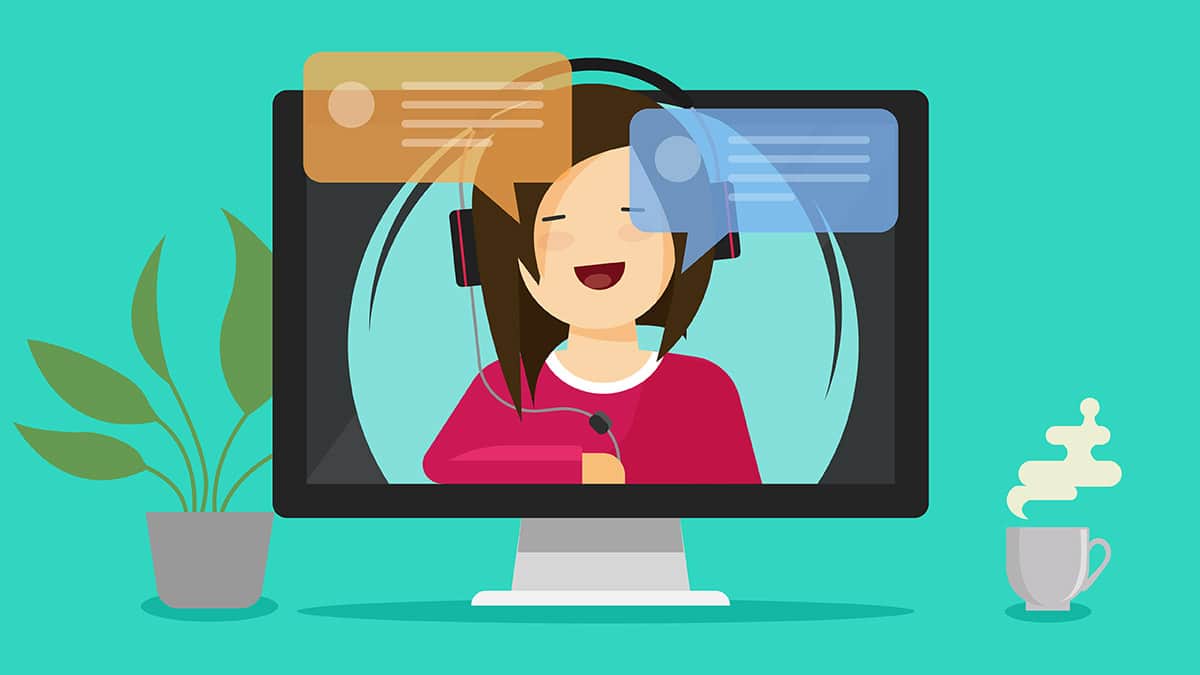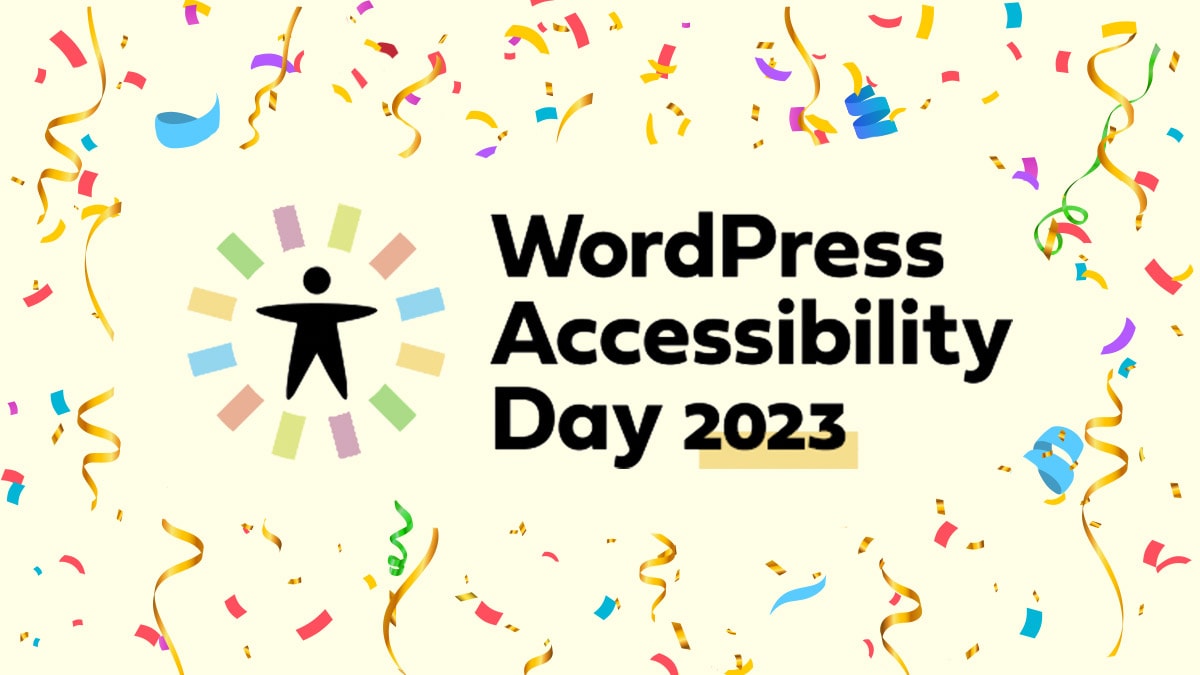On September 27th, Razorfrog attended WordPress Accessibility Day 2023, a free 24-hour global event dedicated to addressing website accessibility in WordPress. WPAD had a diverse speaker lineup and was attended by over 2,100 registrants from 70 countries. The sheer amount of content covered throughout the day left us feeling inspired and motivated to further refine our core accessibility offerings and improve upon our latest website redesign.
We selected ten talks to watch throughout the day with the mindset of taking in as much information as possible. After the webinar was over, we decided to prepare this article to highlight at least one takeaway from each session to more effectively process what we’d learned. Presentation titles below are linked to their respective overview pages on the WPAD 2023 site. These pages include YouTube videos of the talks, in case you’d like to watch them yourself.
Accessibility talks attended and key points

Accessibility Beyond Blindness
Speaker: Allie Nimmons (she/her), Owner, Beedia Productions
Allie mentioned that those who are writing alt text should pretend they are describing images to their blind grandmother of the town she grew up in. This is a great way to capture the nuances within images that would otherwise be missed.
Is My WordPress Site Accessible? How to Perform Accessibility and Usability Tests
Speaker: Maria Gabriela (Gaby) Gandica (she/her), UX Manager, Smartmatic
Gaby provided an informative overview of usability testing guidelines and why they matter. She mentioned usability testing is an ongoing conversation that involves listening, observing, learning and growing. While WCAG is a solid starting point, it can fall short. The missing piece is talking with the people and learning from human experience. In her presentation she covered how to plan for and conduct your usability tests. Collaboration should be inclusive to build with the community. This process is a journey and not a destination.
Recommended resources for continued learning:
- Don’t Make Me Think by Steve Krug – a classic, check it out!
- Systems Usability Scale (SUS) – a reliable tool for measuring usability
- W3C Web Accessibility Initiative (WAI)
- Web Content Accessibility Guidelines (WCAG)
- Nielsen Norman Group – usability testing 101 (good information for starters)
Complex Data Visualizations and the Accessibility Phenomena
Speaker: Merary Alvarado (she/her), Accessibility Specialist, Alinea Consulting Services
Merary enlightened us with her statement that everyone has a disability, and that there are many types. They’re not just physical, but also emotional, mental and social. She mentioned the importance of getting familiar with using a screen reader, mentioning NVDA and Jaws for Windows and Voiceover for Mac.
Merary recommended for folks to check out Deque shortcut sheets for screen readers as a helpful reference guide. She also mentioned looking into WebAIM’s article titled Testing with the NVDA Screen Reader for how to configure and use NVDA.
CSS + Accessibility: Inclusion Through User Choice
Speaker: Carie Fisher (she/her), Independent Accessibility Consultant and Trainer
Carie’s talk started with her mentioning that accessible choices are those which empower the user experience. She mentioned that colors can be controlled via the media queries @prefers-color-scheme, @forced-colors and @inverted-colors. Carie made it clear that these can be used to create a dark mode, which can quickly become complicated. As developers our job is to provide options and let people choose their own adventures.
During this talk, Faye Polson of Kanopi Studios posted this surprising fact within the session chat:
“80% of people have their devices set to dark mode. So if you want to make a dark mode, make sure to put as much effort into it as the light mode, because it’s the version more likely to be seen by users.”
Let’s Build an Accessible WordPress Page & Post
Speaker: Peter Ingersoll (he/him), WordPress Builder, Maintainer, and Trainer, Ingersoll Interactive
Peter suggested web designers to use the Accessibility Checker plugin by Equalize Digital. He mentioned it is a good way to check individual pages for accessibility violations. The plugin can be used in combination with the Gutenberg block based editor and other page builders, making it highly versatile.
A very useful feature of Accessibility Checker is its ability to quickly determine the reading level of a page. This needs to be 9th grade or lower to pass for WCAG 2.1 Level AA.
How to Address Accessibility and Privacy to Help Avoid Fines and Lawsuits
Speakers: Donata Stroink-Skillrud (she/her) and Hans Skillrud (he/him), President and Cofounder/Vice President, Termageddon LLC
We’ve been working closely with Donata and Hans at Termageddon to implement privacy policies on our clients’ websites for over five years. It was an absolute pleasure to attend their talk about what to avoid when implementing privacy policies and ways to make sure they are accessible.
Donata and Hans discussed how cookie policies (or a privacy policy that discusses cookies) are required if your website collects cookies and if you need to comply with privacy laws such as the ePrivacy Directive, GDPR, UK DPA, and PIPEDA. Policies must be clearly displayed in a way that any reasonable person would notice it — typically within the footer of every page of your website.
Donata and Hans also mentioned that web design firms and agencies need to be aware of the dark patterns that exist for cookie consent banners and to avoid them. In order for a cookie consent plugin to be compliant, it must contain both yes and no buttons, allowing visitors to opt-in and opt-out. By default, users do not consent to cookies until they click a button indicating that they do.
Cookie consent banners must also be accessible to all users. Being able to navigate to a consent banner via keyboard is essential. Tabbing should bring you to the banner and allow you to choose which options you want to select.
Alt Text in the Age of Automation: How’s it Actually Going?
Speaker: Caroline Desrosiers (she/her), Founder & CEO, Scribely
Caroline provided an in-depth review of the state of alt text on the web. Alt text is required to reach any level of WCAG conformance and it’s one of the top 5 most common errors in digital accessibility lawsuits and demand letters. Currently most alt text is really bad and does not provide an equivalent text description that captures the “why” of an image.
The top 5 alt text errors present on sites include:
- Keyword stuffing for SEO purposes (keywords don’t belong in alt text because they’re not descriptive)/li>
- Overly-simplistic descriptions that all blend together
- Using the image file name (does not describe the image)
- Formulaic descriptions (product + title + color)
- Low quality AI-generated alt text that is inaccurate/incomplete
Caroline mentioned not a single company from the top 100 eCommerce sites includes a homepage with content that is fully accessible. ChatGPT and similar generative tools are more about quick fixes than quality. Taking shortcuts often results in missing the mark still. Alt text should always be verified by a human and should be less than 250 characters in length.
The secret to writing great alt text is the following:
- Context – everything surrounding the image (text, images, page, audience)
- Purpose – the role the image plays for the audience (why is it there?)
- Meaning – the message the image sends to the audience (look at this, buy the thing, like me)
Immersive Audio Description
Speakers: Mark Cadigan (he/him) and Tanja Milojevic (she/her), Cofounders, GetBraille.com
Mark and Tanja run an audio description writing company. Their presentation addressed what audio description is, why it’s important, types of audio description and narration recording software.
An audio description is an extra track added into an existing video that describes the important elements that are visual that cannot be gathered from listening. These include costumes, gestures, facial language and things essential to understanding the experience that you are participating in.
When you see “TTS” it means text to speech (spoken in a synthetic voice). It is sometimes called “read aloud” technology and allows people with visual impairments or reading disabilities to listen to written words.
Creating an Animation Pause Button in WordPress
Speaker: Danielle Zarcaro (they/them), Founder, Overnight Website by Kinetic Iris
Danielle addressed that animations can present a variety of barriers or issues for website visitors, often resulting in poor user experiences. They showcased an accessible approach that respects the user’s initial system settings and lets them decide how they want to proceed.
Having a toggle for animations helps to prevent overstimulation and eye-strain. The @prefers-reduced-motion media query is particularly useful for accomplishing this goal. Toggles can ultimately be used to control any type of setting on a website. However, it’s important to use the right method, remove all ambiguity, make it consistent with light/dark mode toggles, and not include a bunch of them on your site.
The Impact of Bad ARIA on Web Accessibility
Speaker: Rashmi Katakwar (she/her), Web Accessibility Consultant
During Rashmi’s talk, she shared that basic sites without interactive components do not require ARIA. Interactive controls on a site require ARIA to describe their attributes. She reiterated that “No ARIA is better than bad ARIA,” and that ARIA should be used judiciously and only when necessary.
A special thank you to everyone involved!

Digital accessibility is a rapidly evolving field, and there’s always more to learn. We are grateful to all of the presenters for sharing their time and expertise to educate the greater WordPress community. We would also like to thank all of the incredible organizers, volunteers and sponsors who made this global event happen.
Our team looks forward to attending WordPress Accessibililty Day again next year! In the meantime, we’ll continue learning as much as possible and applying this knowledge to help assist our clients with their accessibility conformance goals.
If you’re interested in attending WPAD, please visit the WordPress Accessibility Day website for more details about forthcoming events, as well as to revisit past years’ events. We also highly recommend visiting the WordPress Accessibility Day YouTube channel to access all previous years’ recorded presentations.

